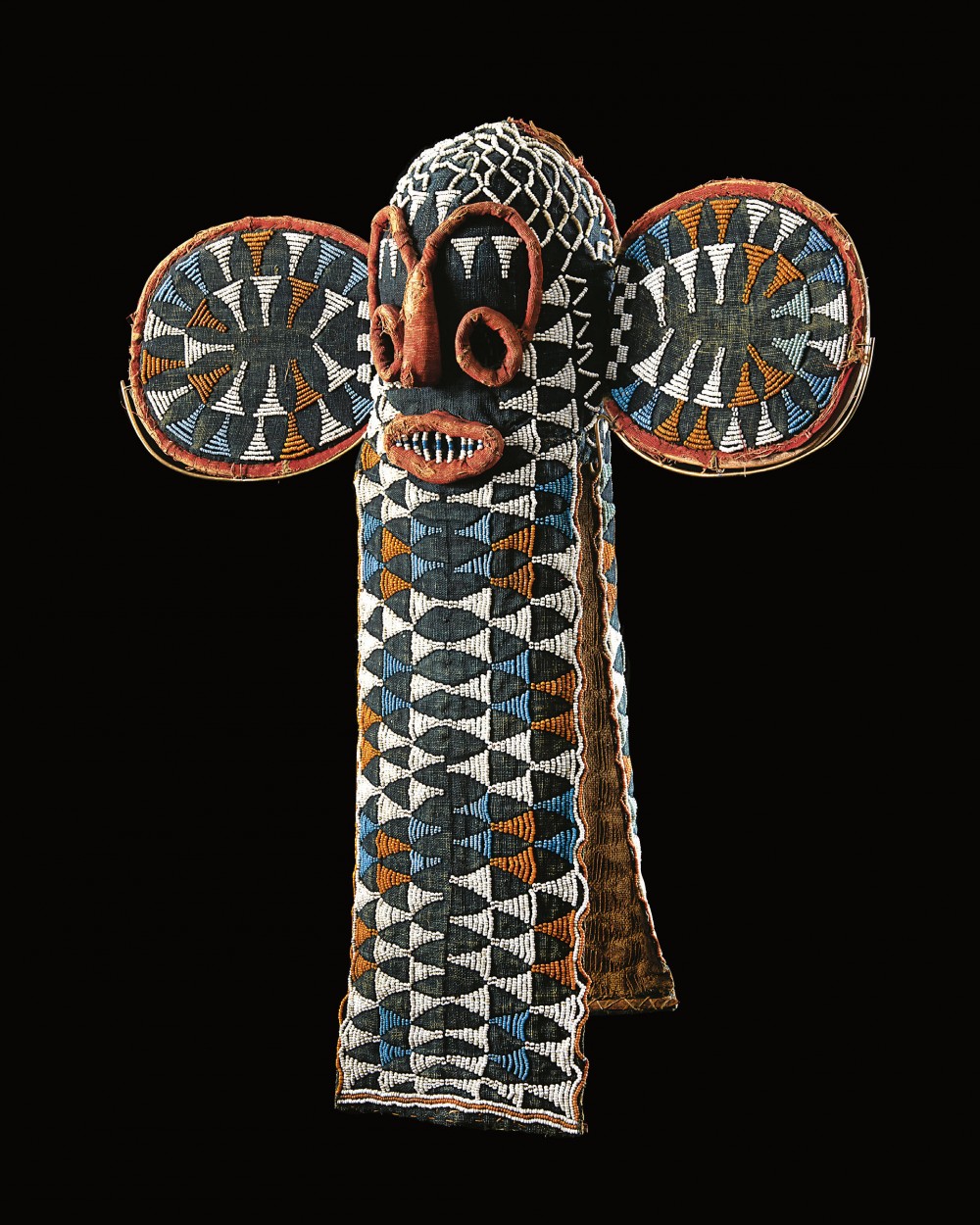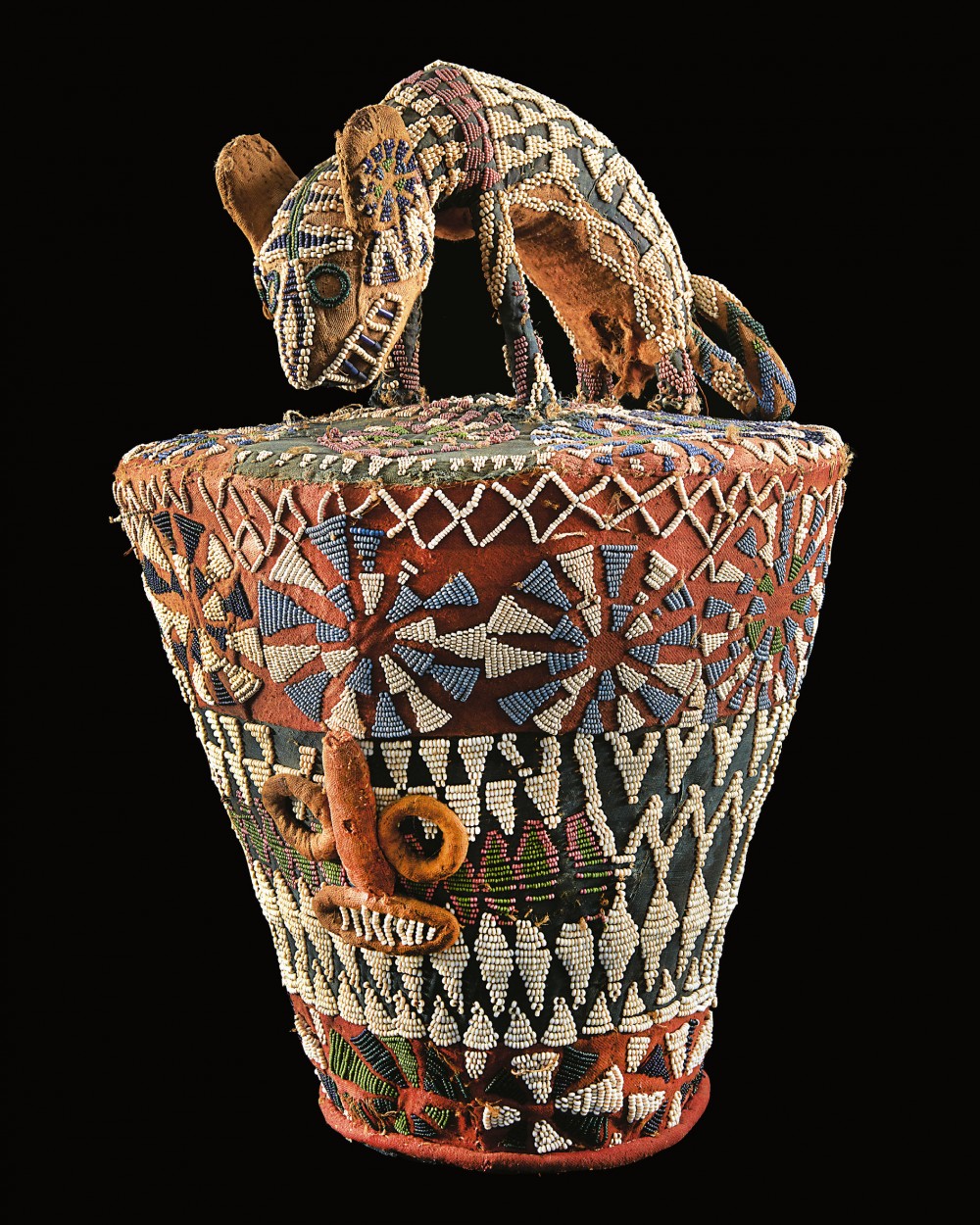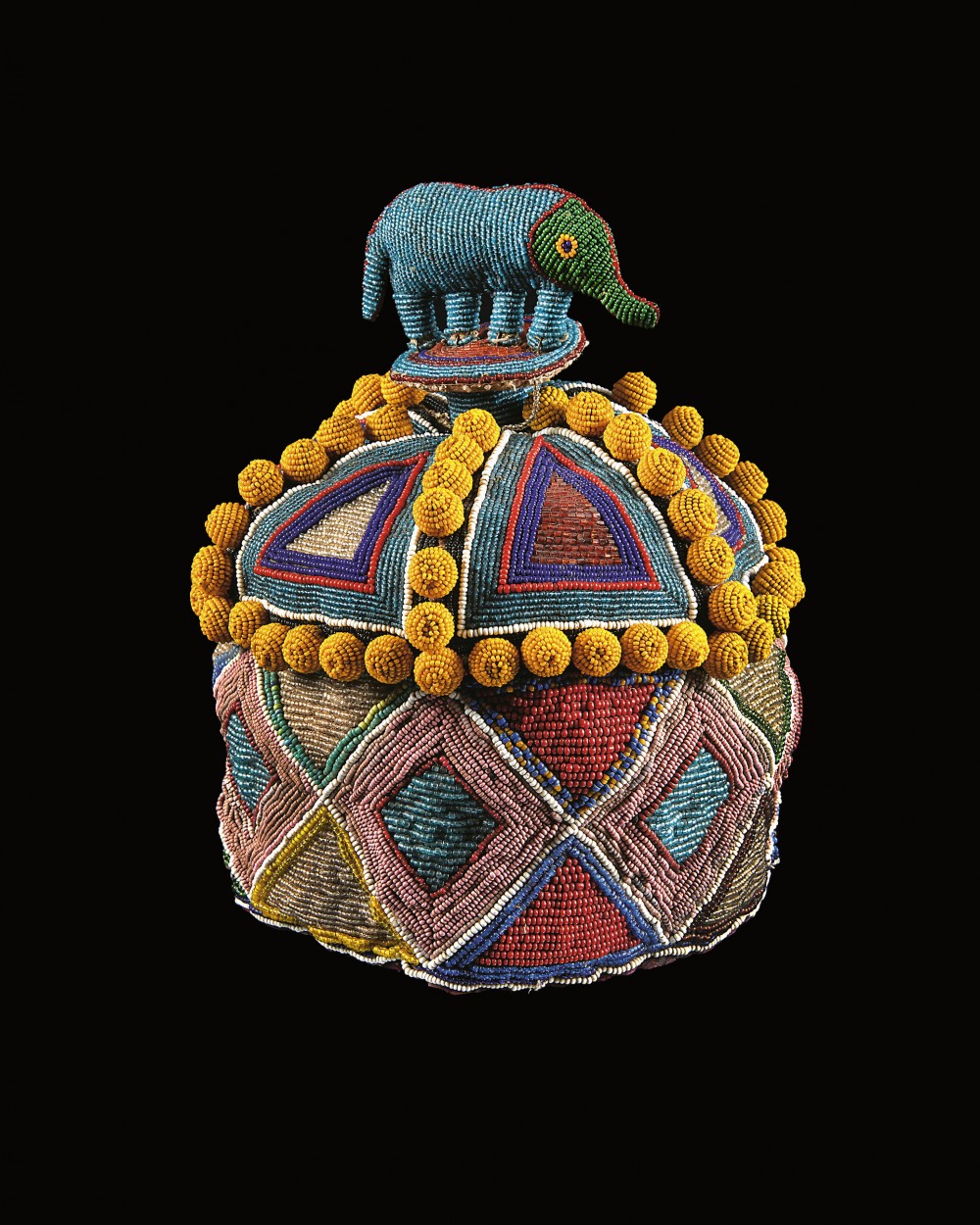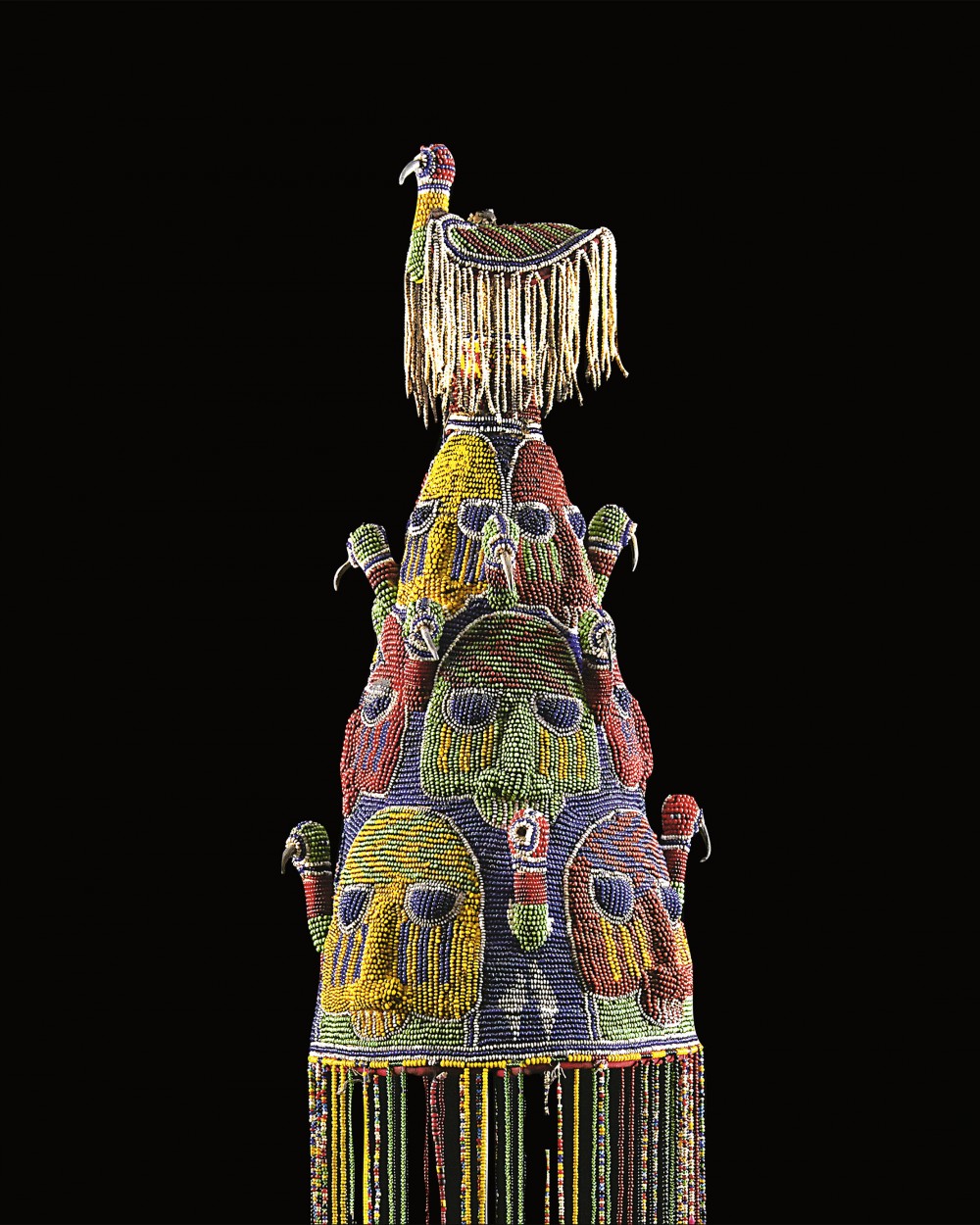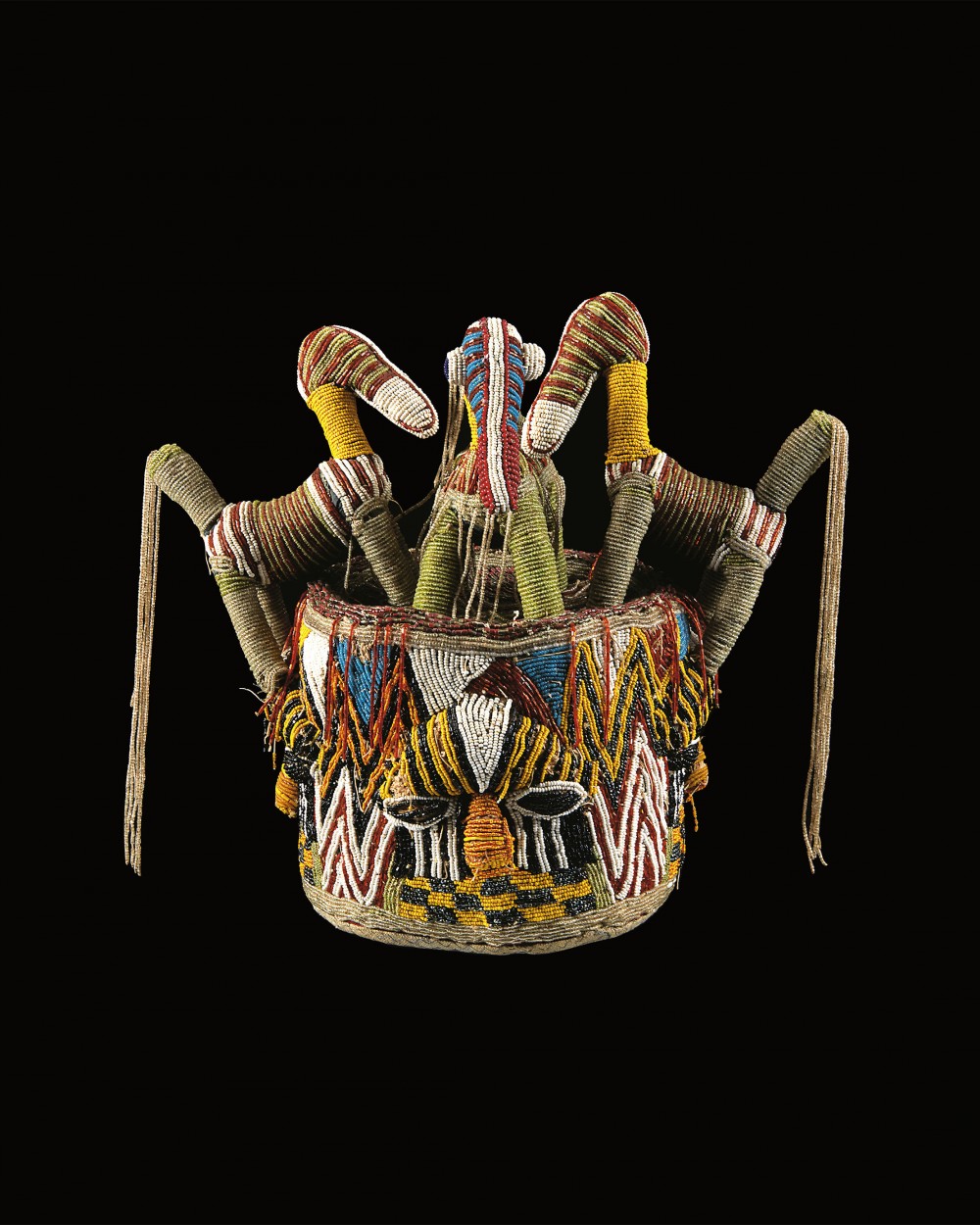African Beaded Art
The presentation of African Beaded Art was shown from 2016 to 2018 and consists of beaded art, which comes from the more recent history of various ethnicities from West and Central Africa and extends up to the present day.
Above all, the roughly 300 exhibits, which consist of ceremonial objects richly decorated with glass beads, as well as everyday items, derive from the Nigerian Yoruba, the Bamileke and Bamum of Cameroon, and the Kuba, who are native to the Democratic Republic of Congo. Jewellery, headdresses, clothing, masks and figures with glass bead trimmings provide an insight into the worlds and traditions of these peoples and following the exhibition of African gold, which ran from 2008 to 2015, present a facet of African art that to date has been little researched.
Even today, the glass bead objects, which with their stunning, multi-coloured brilliance cannot fail to impress, continue to be frequently underestimated and attract little attention in ethnographic collections. From a Western perspective, glass beads are often merely perceived as being a cheap substitute for genuine pearls and in addition, the works created using European-made products are not regarded as being of genuinely African origin.
In fact, as soon as the Portuguese and Dutch started colonial trade, glass beads and metals such as copper were exchanged for slaves and ivory, and served subsequently as a means of payment. Initially, only a few beads were utilised for the decoration of clothing and the body, but following their devaluation, glass beads later offered fresh possibilities in a decorative and artistic regard. Around 1900, this led to the emergence of extensive and sometimes complicated patterns.
The peoples using the beads not only see their value in purely materialistic terms, but also from a multifaceted, intrinsic and symbolic perspective. The colours and shapes of the glass beads reveal a great deal about their age, origins and their employment on differing objects in the various cultures. They thus underline their significance with regard to representation, religion and mysticism.
The relatively young "African Beaded Art” collection on display, which has been assembled in roughly fifteen years, has been analysed scientifically by Michael Oehrl and is described in a comprehensive and richly illustrated catalogue containing also contributions from Bettina von Lintig and Peter Liaunig. Moreover, the study of primary sources and original objects in the museum depot helps to compensate for the general lack of literature regarding the use of glass beads in African art.
Collection "African Beaded Art"
28 April to 31 October 2024 ∙ Wednesday to Sunday 10 am to 6 pm
Museum Liaunig ∙ 9155 Neuhaus/Suha 41 ∙ Austria ∙
+43 4356 211 15
+43 4356 211 15
office@museumliaunig.at ∙ www.museumliaunig.at
